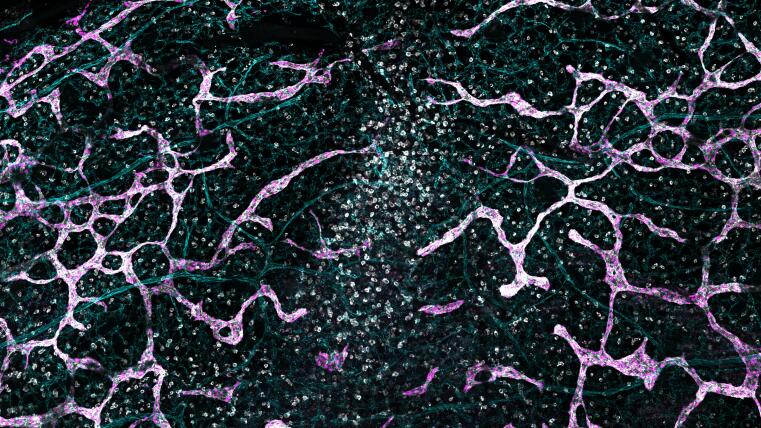
PROJECT B08
Local Cues Trigger Changes in the Migratory Behavior of Lymphangioblasts
The lymphatic vascular system is lined by endothelial cells and controls fluid homeostasis, fat absorption and important aspects of immune surveillance. During embryogenesis, future lymphatic endothelial cells exhibit a complex migratory behavioral pattern in both zebrafish and mice, and need to make various decisions at different points in time about which routes to take before eventually constituting a patent lymphatic vasculature network. The formation, localization, and dynamic behavior of signaling platforms between lymphatic endothelial cells and cells in their environment is to date very poorly understood. Particularly during the very first steps of lymphangiogenesis, cell-cell and cell-matrix interfaces are insufficiently studied, and the molecular and mechanistic causes for the polarized behavior of migrating lymphatic endothelial cells remain enigmatic. In the current project, we will investigate how a newly identified secreted protein, SVEP1/Polydom, governs the behavior of lymphatic endothelial cells. The SVEP1/Polydom protein, a large secreted protein that likely constitutes a component of the extracellular matrix, is expressed not by endothelial cells but rather by other cells in their immediate vicinity. Both zebrafish and mouse mutants for svep1/SVEP1 exhibit a lethal lymphatic phenotype, due to marked defects during early lymphatic cell migration. By employing a combination of in vivo imaging, immunohistochemistry, measuring actin dynamics, genetic interaction and cell culture studies, we aim to unravel how endothelial cells and neighboring cells communicate through dynamic cell-cell and cell-matrix platforms during vertebrate embryonic lymphangiogenesis.


